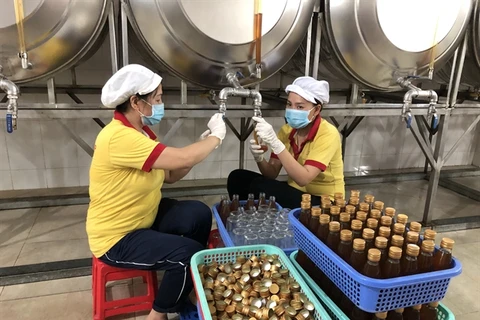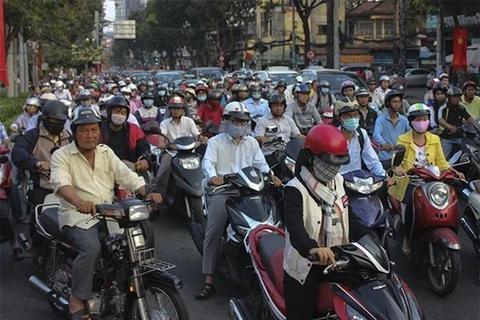HCM City (VNA) - Businesses and local people in HCM City have had relatively low demand for capital due to the negative impact of the COVID-19 pandemic, resulting in the city’s credit growth in the first half of 2020 falling to its lowest level for many years.
According to the State Bank of Vietnam (SBV) - HCM City branch, as of the end of June, the total credit balance was estimated at 2.35 quadrillion VND (101 billion USD), up 2.52 percent against the end of 2019 and a three-fold reduction compared to an increase of 7.51 percent in the same period last year.
Nguyen Hoang Minh, Deputy Director of the SBV - HCM City branch, said the slow credit growth reflects market trends. Many sectors and businesses experienced production declines because of COVID-19 and businesses were forced to suspend operations.
Minh said the pandemic has had a negative impact on economic growth as well as the business community, including banks.
Banks face a high risk from rising bad debts, which as of April 30 accounted for 2.08 percent of total debts.
They are also experiencing other difficulties relating to the process of raising financial capacity and competitiveness, as they have had to focus resources on sharing the difficulties with the business community.
As of late May, credit institutions in the city had provided support for 223,974 customers, with total funds of over 292 trillion VND, through restructuring debts, reducing interest rates, or offering new loans.
Minh said that inspections confirm the greatest problem facing local banks is high bad debts.
Though banks are taking measures to address bad debts, following the National Assembly’s resolution on piloting the settlement of bad debts among credit institutions, the COVID-19 pandemic will have a huge impact on this process this year.
Low credit growth and high bad debts are common problems in the banking system. According to the SBV, as of mid-June, the sector’s credit growth reached 2.13 percent - much lower than the 5.4 percent posted in the same period last year.
SBV Deputy Governor Nguyen Thi Hong said the growth rate is acceptable amid COVID-19.
The banking sector’s liquidity remains abundant at present, she went on, adding that businesses can easily gain access to loans if they have demand and meet requirements.
The banking sector, however, will not lower lending standards to boost credit growth, she affirmed.
She added that the sector will exert every effort to bring the rate of bad debts and potential bad debts to below 3 percent by year’s-end.
Ho Chi Minh City is the largest city in Vietnam and the economic hub of the southern region. Accounting for 0.6 percent of Vietnam’s total land area and about 9 percent of the country’s population, it is part of the southern key economic zone, which also comprises Dong Nai, Ba Ria - Vung Tau, Binh Duong, Long An, Tay Ninh and Binh Phuoc provinces. In the southern economic hub, over 3,000 projects across all sectors are supported by foreign capital, while the number of registered enterprises has exceeded 100,000.
Official data showed that 47,533 workers of 2,862 enterprises in the city are being laid off as a result of the pandemic. Local authorities have provided assistance for 20,000 employees.
According to the municipal Department of Planning and Investment, the total retail of goods and services in the city surpassed 506 trillion VND in the first five months of this year, down 4.9 percent year-on-year.
The city’s industrial production index went down 7.16 percent annually.
However, its exports rose by 6.3 percent yearly to about 17 billion USD, mostly thanks to increases in earnings from computers, electronics and spare parts, vegetables and fruits.
The output of agro-forestry-fisheries topped 5 trillion VND during the five months, up 2.2 percent year-on-year.
Among four key industries, electronics grew by 11.83 percent while chemicals, rubber and plastics expanded by 8.37 percent./.
VNA
























